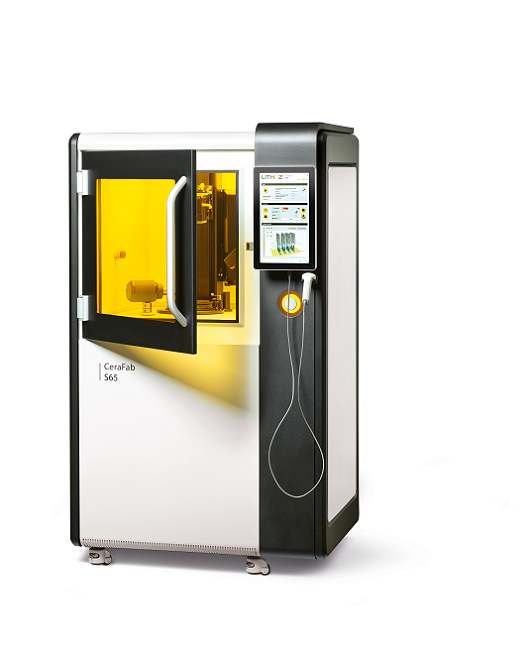
3D Printing News Briefs, September 7, 2024: Ceramics & e-Beam, 3D Circuits, & More – 3DPrint.com
In 3D Printing Information Briefs, Sandia acquired a second LCM 3D printer from Lithoz, and Freemelt efficiently put in its e-MELT-iD at WEAREAM. Shiny Laser Applied sciences now affords high-precision steel LPBF for microscale components. Then, college researchers are 3D printing superior bioprinting supplies, in addition to self-healing circuit boards. Lastly, a not-for-profit has inaugurated the primary 3D printing laboratory in India devoted to historical manuscript preservation.
Sandia Acquires 2nd CeraFab LCM 3D Printer from Lithoz

Lithoz, a pacesetter in ceramics 3D printing, introduced that it has put in a second industrial CeraFab S65 3D printer at Sandia Nationwide Laboratories in New Mexico. Sandia can already print next-generation ceramic components with advanced geometries at vastly lowered prices utilizing Lithoz expertise. Now, by doubling its capability of Lithoz printers, pushed by Lithography-based Ceramic Manufacturing (LCM), the lab will be capable to improve its R&D efforts, and scale up manufacturing of optimized AM ceramic subcomponents. Because of the CeraFab S65 3D printer’s automation, possibility of simply modifying and enhancing designs, and effectivity, Sandia is now shortening improvement cycles for these components from months to lower than every week.
“By combining LCM expertise with the enticing materials properties of AM ceramic, Sandia have already opened the door to printing ceramic shapes and components beforehand not possible to supply. We look ahead to seeing their future achievements with the higher capability of a second Lithoz printer!” stated Shawn Allan, Vice President of Lithoz America.
eMELT Efficiently Put in at WEAREAM Middle of Excellence

Swedish firm Freemelt, identified for its open structure electron beam 3D printers, introduced the profitable set up of its e-MELT-iD system at Italian analysis institute WEAREAM. The steel printer was developed particularly for e-beam analysis from thought all the best way to commercialization, which is the institute’s fundamental focus. Freemelt and WEAREAM accomplished pre-installation, setup, dry runs, useful exams, and security certifications of the e-MELT-iD printer inside two weeks, in response to Freemelt Service Technician Emil Freed. Fundamental operator coaching is full, and superior person coaching will additional empower WEAREAM to make use of the machine to effectively print high-quality elements.
“The previous few weeks have been extremely productive as we have now welcomed Freemelt and the eMELT-iD into our facility. From pre-installation and configuration to hands-on operator coaching, the experience of the Freemelt workforce has been appreciated and precious. We’ve accomplished all of the required steps to begin working the machine in a means that meets our expectations. With my in depth expertise of E-PBF expertise and from implementing new machine fashions, I’m very impressed with the environment friendly website acceptance check course of and the machine reliability,” stated Maurizio Romeo, the CTO of WEAREAM.
“Our workforce is worked up to begin working the eMELT machine, and we look ahead to the upcoming superior person coaching to unlock its full potential, so we are able to progress in our ongoing discussions with industrial companions. Our preliminary focus will likely be in Ti64, Tungsten and Molybdenum functions.”
BLT Permits Micro-Half 3D Printing with Excessive-Precision Steel LPBF

Stainless-steel threaded half
Xi’an Shiny Laser Applied sciences (BLT) introduced the event of high-precision steel laser powder mattress fusion (LPBF) expertise, which can enable the corporate to fabricate microscale components with glorious floor end. Typical steel LPBF printing can fabricate advanced elements, however as an alternative of small, intricate components, it’s actually higher for printing components with bigger characteristic sizes, manufacturing precision above 0.1mm, and floor roughness starting from 5-20μm. BLT noticed the necessity for smaller, extra exact steel LPBF elements, and has spent years optimizing its processes, software program, gear, and uncooked materials to allow its new resolution, which addresses the constraints of different steel LPBF processes. The corporate says it could actually now obtain microscale 3D printed components with precision under 0.05mm and floor roughness as little as Ra 2-3μm.
To showcase the capabilities, BLT used algorithmic digital design to make an F-RD topology construction mannequin; F-RD is a sort of periodic minimal floor with advanced curvature variations and distinct hyperbolic options. The ultimate fashioned half reveals the consequences of assorted inclinations on the mannequin’s “native floor texture throughout the similar layer thickness.” Elements printed with the high-precision steel LPBF have been in comparison with ones fashioned with conventional 60μm, 40μm, and 20μm layers, and the corporate says the outcomes have been glorious, with decreased roughness and improved floor high quality for the steel LPBF components. This versatile expertise has already been utilized in quite a lot of industries, and these initiatives have been detailed in BLT case research. As an example, BLT’s high-precision steel LPBF expertise was used to print a medical structural element with all eight 0.3mm fluid channels intact. One other instance is a stainless-steel threaded half with out help constructions, a forming angle of 30°, and a minimal thickness of 0.1mm.
UC Boulder & U Penn Researchers 3D Print Patch for Broken Tissue Restore

Researchers from the College of Colorado Boulder and College of Pennsylvania collaborated on a brand new 3D printing methodology to create supplies that replicate the pliability and power of human tissue. Steady-curing after Gentle Publicity Aided by Redox initiation (CLEAR) will likely be used to create superior, sturdy biomaterials with the toughness to carry up beneath joint stress, the pliability to outlive fixed heartbeats, and the adaptability to satisfy the wants of various sufferers. Impressed by the advanced entanglement you see with worms, CLEAR works by interweaving lengthy molecules inside 3D printed supplies, and the ensuing constructions can adhere to moist tissues. Attainable functions embrace cartilage patches, needleless sutures, and drug-infused coronary heart bandages. The analysis workforce has filed a preliminary patent for his or her CLEAR methodology.
“Cardiac and cartilage tissues have very restricted capability to restore themselves. As soon as broken, they will’t be restored,” defined Jason Burdick, senior creator of the workforce’s analysis paper. “By creating new, extra resilient supplies to assist within the restore course of, we are able to considerably affect affected person outcomes.”
Singapore Researchers 3D Print Self-Therapeutic Circuit Boards

Researchers from the Nationwide College of Singapore developed a novel 3D printing approach, known as CHARM3D, for fabricating circuit boards that may heal themselves! With vertical manufacturing strategies like 3D printing, electronics will be stacked up and have smaller footprints, however strategies like direct ink writing (DIW) make this tough to realize, as a consequence of viscous composite inks that require help supplies. CHARM3D, alternatively, makes use of a steel alloy known as Subject’s steel—made out of indium, tin, and bismuth—that flows easily, has a really low melting level, and shortly self-solidifies. This allows the printing of easy, uniform 3D steel microstructures which might be as skinny as a couple of human hairs. Plus, if a circuit is scratched or deformed, it could actually self-heal from the injury and re-solidify as soon as it’s heated up previous the melting level. There are various thrilling functions for this method, together with healthcare; the workforce has already 3D printed a wearable battery-free temperature sensor and antennas for wi-fi monitoring of significant indicators.
Benjamin Tee, an affiliate professor at NUS who led the analysis, stated, “By providing a quicker and easier method to 3D steel printing as an answer for superior digital circuit manufacturing, CHARM3D holds immense promise for the industrial-scale manufacturing and widespread adoption of intricate 3D digital circuits.”
India’s First 3D Printing Lab for Manuscript Preservation

Dr. Shrinivasa Varakhedi, Vice Chancellor, Central Sanskriti College, New Delhi, together with Prof P R Mukund, Founding Trustee, Tara Prakashana, inaugurating the 3D printing laboratory.
Lastly, not-for-profit belief Tara Prakashana, established in 2006 by Founding Trustee Prof. P.R. Mukund for the aim of preserving and disseminating Vedic data, has inaugurated the primary 3D printing laboratory in India that’s devoted to preserving historical manuscripts. In 16 years, the Bangalore-based group has saved over 3,300 manuscripts utilizing the most recent applied sciences, together with multi-spectral imaging and now 3D printing. The machines within the lab will replicate and protect these essential manuscripts with precision, to assist obtain the essential want of conserving the nation’s literary heritage from bodily and environmental degradation. The primary initiative on which the laboratory will focus is 3D printing the world’s oldest copy of the Bhagavad Gita Hindu scripture, making certain that the sacred textual content is preserved for lots of of years.
“Know-how can be utilized for each constructive and adverse functions,” stated Dr. Shrinivasa Varakhedi, Vice Chancellor, Central Sanskrit College, New Delhi, who inaugurated the laboratory. “Naturally, these polymers have a long-lasting property that has been used to protect data for a number of centuries by Dr. Mukund and his workforce at Tara Prakashana. That is the primary utility of 3D printing in the direction of manuscript preservation in India, and I see functions of this throughout India to protect our tradition and data. That is the subsequent technology of expertise utilized to preservation that requires analysis and widespread utility.”
Subscribe to Our Electronic mail Publication
Keep up-to-date on all the most recent information from the 3D printing trade and obtain data and affords from third get together distributors.

